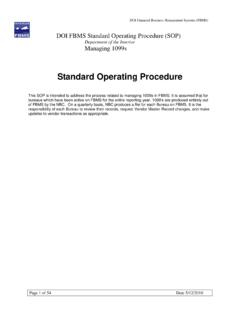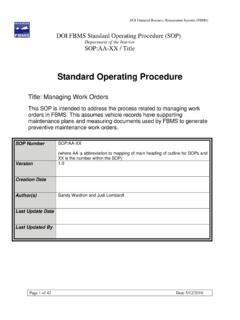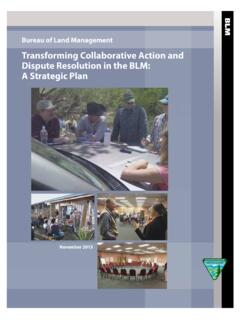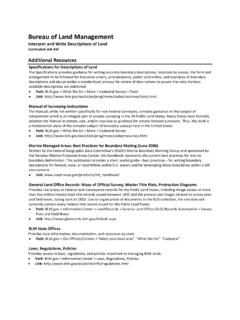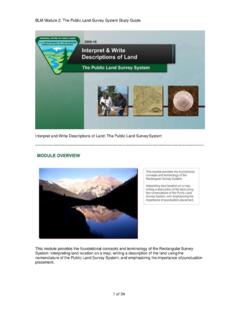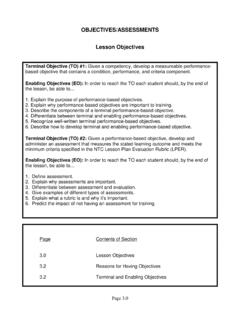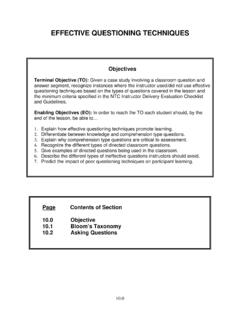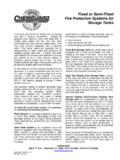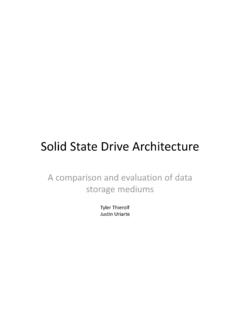Transcription of Understanding Pumped Storage Hydropower
1 Michael Manwaring, HDR EngineeringUnderstanding Pumped Storage HydropowerMichael Manwaring, HDR EngineeringChair, NHA Pumped Storage Development CouncilNovember 2012 Presentation Agenda General Overview Historic Perspective Variable Renewable Energy Integration Siting a Pumped Storage Project Water Resource Needs Transmission Needs & Siting Transmission Needs & Siting Overview of MarketsExisting Pumped Storage ProjectsJocassee & Bad Creek Pumped Storage Projects (Duke, South Carolina) Pumped Storage Project Design SchemePumped Storage Project Design SchemeOverview: Challenges to Develop Pumped StorageProjects are Capital Intense Licensing ($millions) Construction/Operation ($billions)Markets Limitations: Valuing services Pumped Storage and conventional Hydropower provide (missing revenue streams) Level playing field for all energy Storage technologies Regional differences in generation and energy Storage needs Regional differences in generation and energy Storage needs Pumped Storage s role in energy security for domestic electric gridRegulatory.
2 Need for streamlined licensing for low-impact Pumped Storage projects (off-channel or closed-loop projects) Pumped Storage HydropowerSmallest Plants Flatiron (CO) MW (Reclamation) O Neil (CA) 25 MWLargest Plant Rocky Mountain (GA) 2100 MW Ludington (MI) 1870 MWFirst Pumped Storage ProjectFirst Pumped Storage Project Switzerland, 1909 First Pumped Storage Project Connecticut, 1930s -Rocky River (now 31 MW)Most Recent Pumped Storage Project California, 2010 -Olivenhain-Hodges (40 MW) Pumped Storage Hydropower DevelopmentEarly reversible Pumped Storage unit 1937 Flatiron Powerplant - One MW PS Unit(Reclamation, Colorado)Rocky Mountain Pumped Storage Project 760 MW (Oglethorpe Power, Georgia)Why Pumped Storage Being Developed (Again)?Support Increased Variable RE Generation DOE Goal of 20% Wind PenetrationProvides balancing, reserves and grid stability Remains a fundamental grid component Most economical means of Energy Storage Plant design life of 50 to 100 years Plant design life of 50 to 100 years Other technologies design life -?
3 ?Proven technology with major advancements Adjustable/Variable Speed Closed Loop Projects minimal environmental impactsOlivenhain-Hodges Pumped Storage Project - 40 MW (San Diego County Water Authority, California)Where/Why is Pumped Storage Being Developed?Europe is building Pumped Storage because: Significant integration of wind and solar Lack of access to natural gas for fast regulation/response Established markets/tariff structures for revenue Markets developing to value ultra-fast responseChina is building Pumped Storage because:China is building Pumped Storage because: Want to self supply wind (over 42 GW in 2010) Transmission constraints limit grid integrationJapan built Pumped Storage because: Nat l sponsorship to promote grid reliability (Island = self supply) Post FukashimadevelopmentWhere is Pumped Storage Being Developed?CountryTotal MW% Total MWChina3,48022%Japan3,45021%Switzerland1 ,90012%South Africa1,3688%Portugal1,2117%Spain1,0276% RegionTotal MW % Total MWEurope5,29733%Asia (Excluding China & India)4,25026%China3,48022%India9006%Spa in1,0276%Austria9596%India9006%Russia856 5%South Korea8005%Luxembourg2001%Total16,151 100%Middle East1,3688%Russia8565%Total16,151100%PS Projects Under Construction, By Country, Outside of N.
4 AmericaPS Projects Under Construction, By Region, Outside of N. AmericaOkinawa Yanbaru Seawater Pumped Storage Project (Japan)Agenda General Overview Historic Perspective Variable Renewable Energy Integration Maximizing RE Value Siting a Pumped Storage Project Water Resource Needs Transmission Needs & Siting Transmission Needs & Siting Overview of Markets Variable Renewable Energy Integration SupportVariable Renewable Energy Integration SupportAgenda General Overview Historic Perspective Variable Renewable Energy Integration Siting a Pumped Storage Project Water Resource Needs Transmission Needs & Siting Overview of Markets Overview of Markets Siting a Pumped Storage ProjectGeneral Steps for Physical Evaluation Elevation (head) Availability to water (surface, ground or treated) Geology (seismic and underground conditions) Access to roads, transmission, etc.
5 Access to roads, transmission, etc. Regulatory FERC Preliminary Permit PAD and Environmental Studies License Application NEPA, CWA, ESA, a Pumped Storage ProjectSiting a Pumped Storage ProjectRed Mountain Bar Pumped Storage Project (TID-Conceptual Design, California)Agenda General Overview Historic Perspective Variable Renewable Energy Integration Siting a Pumped Storage Project Water Resource Needs Surface or Groundwater Open or Closed Loop Open or Closed Loop Seasonal Management Transmission Needs & Siting Overview of Markets Ludington Pumped Storage Project 1870 MW (Consumers/DTE, Michigan)Water Resource NeedsSurface Water Open Loop /Stream Diversion Traditional PS project design Issues: ESA, water temps, minimum flows, fish passageGroundwater/Treated Water Closed Loop New design to minimize Environmental impacts Make-up water needed Make-up water needed Removes aquatic species issues Potential avian issues with heavy reservoir fluctuationsSeasonal Management Concern with Open Loop Minimum flows, drought tolerance, water temperaturesCastaic Pumped Storage Project (LADWP/DWR, California)John Key s Pump-Generating Plant (BPA, Washington)Agenda-General Overview Historic Perspective-Variable Renewable Energy Integration Maximizing RE Value-Siting a Pumped Storage Project-Water Resource Needs-Transmission Needs & Siting -Transmission Needs & Siting -Overview of Markets Transmission Needs & Siting Transmission Line Information Size Information Typically range from 230 kV to 500 kV Length Cost.
6 $2M/mile so length is important Interconnection Study Needs Interconnection Study Needs Typically occur after License Application ready Most States don t have PS-specific forms PS projects can occur significant costs ($$$)Powerhouse and Substation Considerations Surface or Subsurface Design of tunnels/surface shafts are importantConceptual Pumped Storage Underground Powerhouse and Tunneling SchemeRaccoon Mountain Pumped Storage Project (TVA, Tennessee)Agenda General Overview Historic Perspective Variable Renewable Energy Integration Siting a Pumped Storage Project Water Resource Needs Transmission Needs & Siting Overview of Markets Overview of Markets Market Barriers Market OpportunitiesOverview of Markets Market Opportunities Transparent Prices for Energy and Ancillary Services Energy Storage Technologies Treated Equally (almost) Energy Market (Regional) Arbitrage, Day-ahead hourly, Hour ahead, 15 or 5-minute Ancillary Services Market (Regional) Ancillary Services Market (Regional) Frequency Regulation Spinning and Non-Spinning Reserves Voltage Support/Reactive Power Black Start Capacity Customer Energy Management (Demand Side) Shorter FERC Licensing Timeline (development)Ancillary Services PS Can ProvideAncillary Servicesare products (other than energy) necessary to support capacity and the transmission of energy from resources to loads, while maintaining reliable operation and power quality of the Electric Grid.
7 Frequency Regulation instantaneous balancing of the grid Spinning Reserves able to very quickly provide inc. or dec. support Non-Spinning Reserves able to start and ramp up to provide inc. or dec. supportVoltage Support/Reactive Power maintain balance on a regional level Voltage Support/Reactive Power maintain balance on a regional level Black Start ability to restart remotely in the event of an outage Load Following and Peak Shaving T&D Facility Deferral Customer Energy Management Demand sideElectric Grid Power Control Issues and Pumped Storage Solutionsmssmin sScheduling / economics / emissionsTransmission bottleneckshoursdaysPower Quality Bridging PowerEnergy ManagementGrid harmonicsGrid faults / stabilityRenewables - intermittencyVariable Speed & Ternary PS UnitsAdvanced Conventional PS UnitsConventional PS Unitstime scaleCA ISO - Ancillary Service Markets(Trend shows market is Recovering )Courtesy of Kirby Consulting ( )Ancillary Service Markets(Varies by Time of Day)Courtesy of Kirby Consulting ( )
8 2002 2003 2004 2005 2006 2007 2008 2009 2010 Annual Average $/MW-hr California (Reg = up + dn) Regulation Spin Non-Spin Replacement ERCOT (Reg = up + dn) Regulation Responsive Non-Spin New York (east) Regulation Ancillary Service Markets(Trend shows decrease in value)Regulation Spin Non Spin 30 Minute New York (west) Regulation Spin Non Spin 30 Minute MISO (day ahead) Regulation Spin Non Spin New England (Reg + mileage ) Regulation Spin 10 Minute 30 Minute Courtesy of Kirby Consulting ( )Overview of Markets Market Challenges/Barriers Deregulation long-term system planning No long-term markets (spot/day-ahead only) No project financing without long-term contracts Some important benefits aren t recognized PS & Large Hydro stabilize energy prices PS & Large Hydro stabilize energy prices Grid Security/Reliability Portfolio Optimization other products are more efficient Transmission Line Deferral (new or upgrades) RE Energy Recycling (optimize use of wind & solar) Regulated Transmission vs Competitive Generation Natural Gas similar services and low cost (today)Overview: Challenges to Develop Pumped StorageNHA Asks of FERC and ISOs/PUCsMarkets Needs.
9 Valuing services Pumped Storage and conventional Hydropower provide (missing revenue streams) Level playing field for all energy Storage technologies Regional differences in generation and energy Storage needs Pumped Storage s role in energy security for domestic electric gridRegulatoryNeeds:RegulatoryNeeds: Need for streamlined licensing for low-impact Pumped Storage projects (off-channel or closed-loop projects) Reconcile Regulatedtransmission & Competitivegeneration Markets: We need it but cannot help pay for it Goldisthal Pumped Storage Project (Vattenfall , Germany)Michael Manwaring, HDR EngineeringChair, NHA Pumped Storage Development CouncilQuestions? Chair, NHA Pumped Storage Development 2012 Extra SlidesMichael Manwaring HDR does Pumped Storage hydro compare with other Storage technologies?Conventional (Li-ion,Ni-Cd,Pb)Static liquid or solid electrodes/anode materials70 - 90%Li-ion: 95%Flow Cell/Advanced(VRB, ZnBr,NaS)TransportationUPSP ower qualityLoad levelingEnergy Storage TechnologyEnergy Storage TechnologyOperatingprincipleOperatingpri ncipleSystem outputSystem outputCycle efficiencyCycle efficiencyApplicationsApplicationsTwo electrolytes are separately stored60 - 80% min - hours /secondsLoad levelingRenewables storageMassive rotating cylinder stores/delivers energy via 95%Voltage/Frequency stabilizationsec -min /100 kW 10 MW100 kW 10 MW5 kW min - hours /secondsBackup time /Reaction timeBackup time /Reaction timeEnergy densityEnergy densityLi-ion: 290 Ni-Cd: 150 kWh/m3 VRB: 6 NaS: 42 kWh/m32 kWh/m3 BatteriesKineticSource.
10 Alstom Power & HDRCAESS uper CapacitorsFlywheelsstores/delivers energy via motor/generator mounted on stator95%stabilizationPower qualityTransportationOff-peak electricity used to compress air65-75% Energy ArbitrageRenewables IntegrationHigh surface area elec-trode materials used to enhance capacitors to higher power/energy95%Power qualitysec -min /secondshours /minutesmilliseconds /milliseconds5 kW 3 MW10 MW 200 MW< 1 MWPump StorageOff-peak electricity used to pump water to Storage lake100 MW 2000 MWdays /seconds -minutes75 - 85%Energy ArbitrageRenewables IntegrationGrid ReliabilityAncillary ServicesBulk Hydrogen(concept)Hydrolysis with surplus electricity to obtain H2 Bulk Storage H2, H2direct use + turbining500 MW -1000 MW35 - 40%Mobility, Chemistry, Electrification with turbine-generatordays-months/minutes2 kWh/m6 kWh/m35 kWh/m36 kWh/m32700 kWh/m3 KineticPotentialElectricalChemicalDevelo pmental Challenges in the GRIDIMPACTSOnce Through Cooling Rule (EPA 316b) Retirement of Older Fossil Generating Plants Up to 22,000 MW (CA Alone) Up to 70,000 MW (Eastern )
